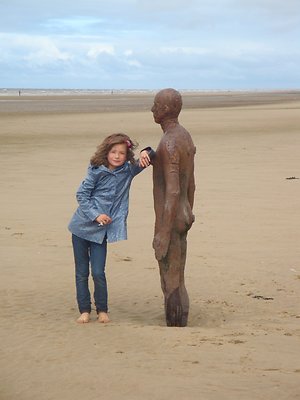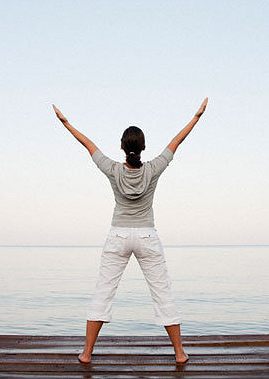Osteopathy - what to expect
Osteopathy is a form of manual therapy that can have beneficial effects for a variety of muscle and joint conditions as well as general health.
Osteopaths are trained in therapeutic approaches that are suitable for a broad range of individuals, including pregnant women, children and babies. When you first visit me, you’ll be asked about your current symptoms and medical history. All information will be treated as confidential in accordance with standards of practice set out by the General Osteopathic Council and the Data Protection Act 1998.
After an initial examination, I'll discuss treatment options with you so that you can agree a course of action and the likely associated costs. Treatment may require several visits and, very occasionally, further tests and or referrals to other appropriate health care professionals.
Treatment usually begins at your first appointment – you may experience mild discomfort afterwards, but in most cases this will resolve within 24 hours. If you have any concerns about your treatment I encourage you to discuss these with me. You’re more than welcome to bring someone with you for your consultation.
A whole body approach
Osteopaths spend four to five years training to understand the relationship between the body’s organs, joints and muscles and are experienced in treating disorders of the musculoskeletal structures throughout the whole body. Osteopathy is a person centred approach that strives to provide the optimum conditions for health by working with your body’s own healing mechanisms to achieve results. Osteopaths see people of all ages, including children, pregnant women and elite athletes. The health risks associated with having osteopathic treatment are extremely low, if you have any concerns about the safety of your treatment I'll be happy to discuss these with you.
"We look at the body in health as meaning perfection and harmony, not in one part, but in the whole"
- Andrew Taylor Still (Founder of Osteopathy)
What is Cranial Osteopathy?
Despite what the name suggests, Cranial Osteopathy can be used on any part of the body- the spine, the trunk, the limbs as well as the head itself. Osteopaths skilled in this approach have undergone postgraduate training to refine their sense of touch (palpation) to be able to pick up subtle patterns of motion in the body and analysing them according to their knowledge of anatomy and physiology.
A founding principle of Osteopathy is that there may be a number of contributing factors to your current symptoms including past trauma, illnesses and environmental factors. Another principle is that the body works as a unit so that a strain in one area can have a knock on effect on another part of the body ie that the structure of the body and how it functions are intimately linked. Therefore a healthy musculoskeletal system is essential to the health of the whole body. Treatment occurs as a result of the osteopath's understanding and knowledge being brought to focus on the patient's particular problems and giving quiet attention to the health pattern within.
"Freeing nature's power to restore health"
- Andrew Taylor Still (Founder of Osteopathy)
Who recognises Osteopathy?
The General Osteopathic Council (GOsC) regulates the practice of osteopathy in the UK, promoting patient safety by setting and monitoring standards of osteopathic conduct. By law, an osteopath must be registered and comply with strict regulatory requirements. This gives patients the same sort of guarantees and protection as those given by doctors and dentists.
The UK National Institute for Health and Care Excellence (NICE) recommends spinal manipulation for lower back pain. Osteopaths are trained to deliver such treatment and offer self-management advice.
What conditions can Osteopathy help?
Please ring me to discuss whether osteopathy might help if you can't see your particular problem in this list below:-
- General & chronic backache, back pain
- Headache arising from the neck
- Joint pains (including hip and knee pain from osteoarthritis)
- Mechanical neck pain
- Frozen shoulder/ shoulder and elbow pain/ tennis elbow
- Generalised aches and pains
- Arthritic pain
- Inability to relax
- Lumbago
- Migraine prevention
- Minor sports injuries and tensions
- Muscle spasms
- Neuralgia
- Rheumatic pain
- Sciatica
- Digestion problems
Living Sculptures
Osteopaths can seem to be excessively nosey about our patients lives, past and present. The reason is, that in order to understand current problems we need to get a clear picture of any life experiences, which may have had an effect on the individual’s health.
Obviously, some past events will leave a big imprint, such as falling off a roof and severely injuring the neck, while others, like banging an elbow on a door frame will have only a temporary effect. The effects of a traumatic event will vary from one person to another. For example, the loss of a parent at 10 years old has different consequences to losing a parent at 60 and will leave different emotional impressions on the people grieving.
Events in our lives can mould us physically, emotionally and mentally
These emotional, physical and mental effects can start before birth. The genes and health of the parents and the environment can play a part in the health of a developing baby in the womb. For example, air pollution can adversely affect lungs and brain development in the womb (Peterson, Rauh, Bansal, JAMA Psychiatry 2015) and prenatal maternal stress can play a part in a range of issues from low birth weight to behaviour and mental health problems in the child (Glover, Barlow, J Children’s Services 2014).
Some births are difficult, such as when the baby is in an awkward position and, for example, in rare cases, a nerve in the shoulder can be overstretched leading to some temporary paralysis of the baby’s arm. In most cases, however, the wonderful innate recovery potential allows babies to resolve the forces involved in the process of birth. Very little research has been done into how birth affects babies but in 2015 at York University in Canada a study indicated that those born by C section seem to have a lower attention span than babies born vaginally.
As a child grows and discovers the world there will be countless hurdles including falls, infections and the ups and down of relationships with peers and family. Our innate resilience allows us to bounce back from most of these events as our bodies strive towards health. However, if the physical or emotional force is too great or our resources too low (especially if a number of adverse events happen at once) then there may the possibility of the memory of a trauma being held in the tissues of the body.
As we go through life
Our bodies can respond to sudden physical trauma, for example, developing a limp after twisting the ankle can result in a twist through the spine. Prolonged patterns of behaviour or emotional states can also affect how the body works; such as a lack of self confidence in a teenager who is getting bullied might develop into a protective posture with head down and shoulders drooping.
Rear end collisions can affect the occupants of a car differently depending on position in the car, general physical health (including previous injuries and presence of arthritis) and their anxiety levels.
Our posture can also reflect our occupation, for example, a desk worker or long distance lorry driver may develop rounded shoulders and shortening through the front of the hips. Repeated heavy lifting in a builder may increase the wear and tear in the joints of the lumbar spine. Certainly as we age, our muscles, ligaments and bones become less pliable and may not recover as readily from physical trauma.
How osteopathy may help you
Throughout life, the way we respond physically and emotionally to the rough and tumble of illnesses, accidents, stress and loss will determine how our body structures are moulded and sculpted to be what they are today. In order for osteopaths to help patients it is necessary to understand the history of what has happened to each individual. This information is then used during treatment to help release any restrictions in the joints and muscles and to encourage the body to recover. Old trauma patterns are identified and the osteopath’s ‘thinking fingers’ can bring about more lasting improvements to health.




